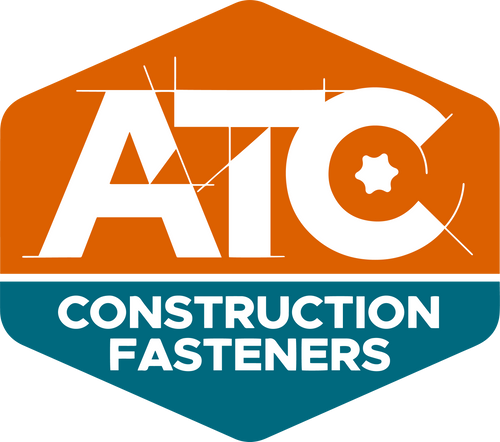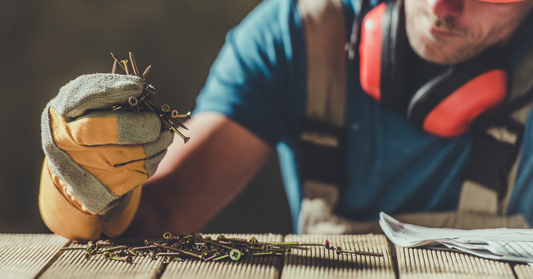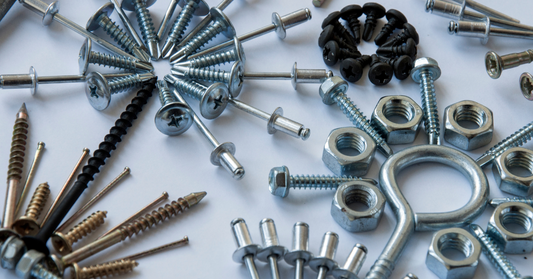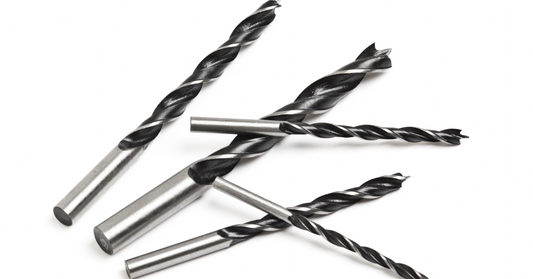With nearly 30 years in the construction fastener business, we repaired too many decks where the original builder used cheap galvanized fasteners that rusted out in just a few years.
Those jobs showed that using the wrong fasteners just leads to more waste and rework down the line. That's when we switched to stainless steel fasteners. Stainless steel is the eco-friendly option that actually lasts.
The eco-friendly question really comes down to four things: what the screw is made of, how long it actually lasts in your environment, and what happens to the metal when the project gets torn down.
TL;DR (Are Wood Screws Eco-Friendly?)
- Wood screws are eco-friendly when they don’t rust and last a long time, so you don’t have to replace them often.
- Green building rules like CALGreen and LEED say using sustainable screws helps meet environmental goals.
- 316 stainless steel screws are great near the ocean because they don’t rust and last many years.
- 304 stainless steel screws work well inland where it’s drier, and they cost less.
- Screws with ceramic or epoxy coatings use less energy to make and don’t rust as fast as galvanized screws.
- Picking the right screws for where you build means fewer repairs and less trash.
- Simpson Strong-Tie and Eagle Claw Fasteners make some of the best eco-friendly screws that last and are good for the environment.
Why should contractors consider using eco-friendly fasteners?
Choosing the right fasteners does more than just hold your project together. It can shrink your project’s environmental footprint. Corrosion-resistant screws help avoid callbacks caused by rusted or failing fasteners. Fewer callbacks mean less waste, less labor tearing things apart, and fewer replacement fasteners used.
That cuts embodied carbon and energy use over the structure’s life. Durable fasteners keep projects intact longer and reduce avoidable repairs.
Green codes: why eco-friendly fasteners matter for contractors
Most residential contractors won’t deal with complicated green building programs, but some codes matter:
- CALGreen requires construction waste diversion. Less replacement and scrap waste help keep your site compliant and cut costs.
- LEED and green certifications apply mainly to commercial or high-end residential work. If you’re on those projects, fasteners with Environmental Product Declarations (EPDs) or recycled content letters speed approvals and reduce paperwork hassle.
- Local jurisdictions increasingly recognize product declarations for sustainability. Having fasteners with transparent data avoids headaches with inspectors and building officials.
For most projects, this means using eco-friendly fasteners saves money, reduces waste, and keeps jobs on schedule. These benefits are practical, not just green buzzwords.
Are all types of wood fasteners eco-friendly?
Not even close. Some fasteners last decades without issue, while others rust out in a year and force premature replacements that pile up waste. The eco-friendly answer depends on what the fastener is made of, how long it actually lasts in your specific environment, and whether it can be recycled at the end of its life.
Here's the breakdown on the main types contractors use in timber construction and what makes each one eco-friendly (or not).
Coated steel screws: the middle ground
Coated deck screws typically have carbon steel with epoxy, ceramic, or polymer coatings. The green or bronze coatings are ACQ-compatible, meaning they resist corrosion from the copper compounds in modern pressure-treated wood.

Why they can be eco-friendly: When matched to the right environment, coated screws last long enough to avoid premature replacements, and the steel core is recyclable at the end of life. Coated screws from Simpson Strong-Tie have proven track records that minimize callbacks and waste from failed fasteners.
The coatings themselves aren't exactly green to make.
- Epoxy coatings are basically plastic made from oil, and making them releases fumes and uses a lot of energy. Newer versions that use water instead of harsh solvents cut those fumes by 60–80%. Today, some companies are testing plant-based versions that lower carbon footprints by 20–66%.
However, most screws you'll see in big box stores still use the old oil-based stuff.
- Ceramic coatings need really high heat to cure (or bake on), which takes a lot of power and puts pollutants in the air that have to be cleaned before they leave the factory. Once they're on the screw, they're fine, but getting there isn't clean.
-
Polymer coatings are also oil-based plastics in most cases, so making them burns fossil fuels. Some newer coatings use cornflour or plant oils instead and cut emissions by 40–50%, but those aren't common on deck screws yet.
The catch: Not all coated screws are created equal. Cheap versions corrode quickly even in moderate outdoor conditions. You might know someone who bought screws marketed as “ACQ-rated” but still rusted out in 5–11 years, with half snapping off during removal.
The coating is only as good as its thickness, adhesion, and the base steel quality. To ensure your wood screws will never fail near coasts or in high-moisture areas, use stainless.
Just buy coated screws from proven brands, like Simpson Strong-Tie. They have screws that are ACQ compatible if you’re building a structure with treated wood. The eco-friendly case for coated screws is really about them lasting long enough to reduce waste, not about how cleanly the coating is manufactured.
Galvanized steel: affordable but not a great choice for going eco-friendly
Galvanized screws are the cheaper option for decks and framing in areas with less moisture. You can use them in places with some rain. If you’re in the Midwest of the US, it’s probably safe to use these screws.
They are a lot cheaper than stainless or coated screws. But near the ocean or places with a lot of rain, the zinc coating wears off quickly, leading to rust stains and weaker joints.
Why they're not always eco-friendly: When galvanized screws lose their coating, zinc gets washed off into rainwater. This runoff can be very harmful to fish and other water life, sometimes far exceeding safe limits. For decks or docks near water, this zinc runoff can pollute lakes, rivers, or oceans.
To protect water life, builders need special ways to handle runoff. However, the best option is buying quality coated screws that don’t release harmful zinc or just using SS wood screws.
Brass and copper screws: durable but uses a lot of natural resources.
Brass screws are great when you care about how your woodworking project looks. This makes them ideal for installing doors, making cabinets, and other projects where the screws are visible. They can last over 30 years outdoors, and you won’t see any signs of wood stains, as long as you install them right.

Why they're not universally eco-friendly: Making brass screws requires mining copper and zinc. Mining copper and zinc uses a lot of energy. Also, it can lead to habitat destruction, water pollution, and high carbon emissions.
Brass screws are also soft. In order to not damage them, you’ll have to drill pilot holes and drive them carefully into the wood.
When they're worth it: Brass screws make sense only in small amounts, in spots where looks and rust resistance really matter and replacing screws would be a big hassle. Using brass on every woodworking project isn’t green, but using it smartly is.
Plastic and nylon fasteners: not on every wood construction
Plastic and nylon fasteners don’t rust and don’t carry electricity. This makes them good for holding wires, clips for insulation, and other light jobs that don’t carry heavy weight in wood projects. You’ll never have to worry about rust with these screws.
Why they're not eco-friendly for structures: Plastic fasteners aren’t strong enough for timber structures. They can slowly bend or change shape under heavy loads, causing them to fail earlier than regular wood fasteners.
If you use plastic where you’re supposed to use metal, you’ll have to replace the fasteners more often. On top of that, plastics are usually harder to recycle than metals.
When they fit: fixtures, accessories, low-load connections where corrosion is a genuine concern and structural loads are absent. Never for decking, framing, or anything load-bearing.
Wooden nails: renewable, circular fasteners for timber

There’s a cool option out there from a brand called LIGNOLOC. They make wooden nails from beechwood that connect timber without any metal. These nails are fired into the wood with a pneumatic tool that heats the wood’s own glue (called lignin), locking them tight without the need for metal or glue.
They have a carbon footprint about 66% less CO₂ than steel nails and break down just like normal wood when the project’s done.
Why they’re good for the planet: They’re made from renewable beechwood, avoid metal corrosion and thermal bridges, and fit perfectly with modern recycling, letting whole wood pieces get reused. They’re officially approved for building use in the EU and USA and come with detailed environmental data to back it all up.
What to watch out for: You’ll need special pneumatic guns to use these nails, and you have to check the project’s design rules to make sure they’re OK for what you’re building. They’re best for pre-made timber parts, special panels, and projects focused on recycling wood, so don’t expect to swap them in for every single nail or screw job.
Stainless steel: the most eco-friendly wood screws today
Stainless steel fasteners are the most eco-friendly metal choice for wood construction. They don’t rust as easily as other wood screws. You’ll never have to buy new ones to replace the SS screws you installed 10 years ago.

Why they're eco-friendly: They have a recycling rate over 90%, and the metal can be melted down and reused again and again without losing quality. Clean stainless steel scrap is valuable, so scrapyards buy it back at good prices.
304 vs 316: 316 contains molybdenum, which keeps it from rusting in salty air. Because of this, 316 is a must for oceanfront decks, docks, and splash zones. On the other hand, 304 rusts quickly in oceanfront areas. But 304 works fine in inland areas with low humidity, moderate temperatures, non-acidic rain, and limited salt exposure.
Choosing the right grade means your fasteners will last their full service life. That’s key for being truly eco-friendly, instead of having to throw out rusted screws every few years.
The Wood Screw Makers With the Most Eco-Friendly Wood Fasteners
For contractors looking to build strong, lasting decks and timber projects while cutting down waste, Simpson Strong-Tie and Eagle Claw should be your go-to brands. Their wood screws are built tough to resist corrosion, reduce callbacks, and make your job quicker and cleaner.
At ATC Construction Fasteners, we’ve seen what contractors face every day. From coastal salt spray and humid climates that damage lousy fasteners in months to long hours and tough schedules that don’t leave time for callbacks. We know minimizing waste isn’t just good for the planet. It’s critical for keeping your contracting business thriving and maintaining its good reputation.
That’s why we partner with trusted names like Simpson Strong-Tie and stand behind our own Eagle Claw line. Choosing these brands of eco-friendly fasteners is a must for your business. It saves money, cuts headaches, and helps get durable, clean jobs done right the first time.
We’re now offering a FREE sample pack of our best stainless steel screws. Just click the button, fill out the short form, and we’ll ship them to you. No cost and no risk!
FAQs
What makes Eagle Claw wood screws eco-friendly?
Eagle Claw wood screws are eco-friendly because they use durable 304 and 316 marine-grade stainless steel. This means they won’t rust or break down easily, and you might never replace them in your lifetime.
The Torx drive head helps with installation. It stops the screwdriver from slipping and wears out driver bits slower, so you don’t keep buying new bits. The Type-17 point makes starting screws quick and easy, which speeds up the whole job.
Plus, those little nibs under the head help the screw seat without messing up the wood, preventing splitting and ensuring the wood holds tight and doesn’t weaken over time.




